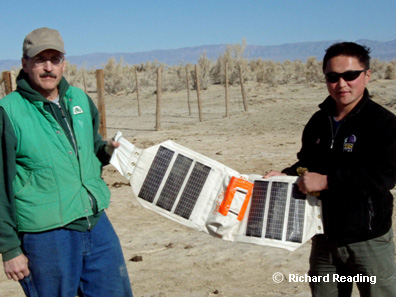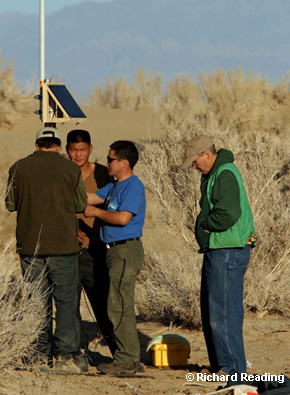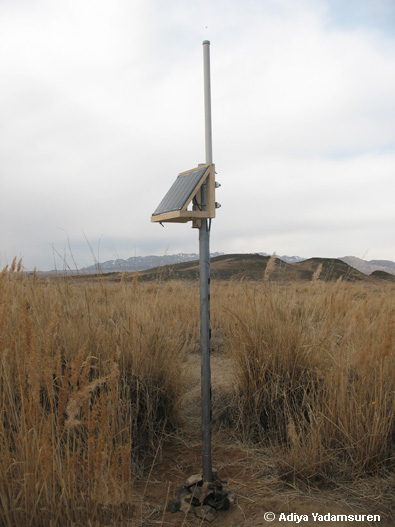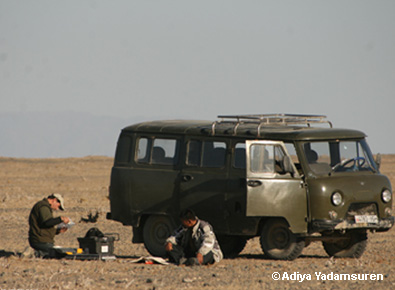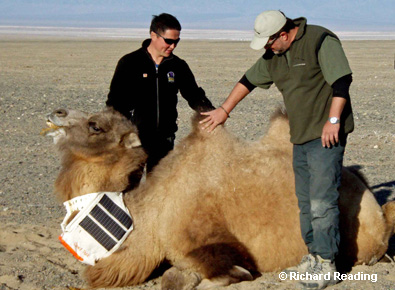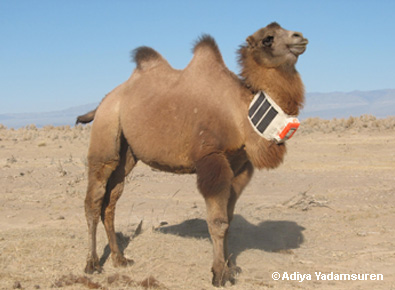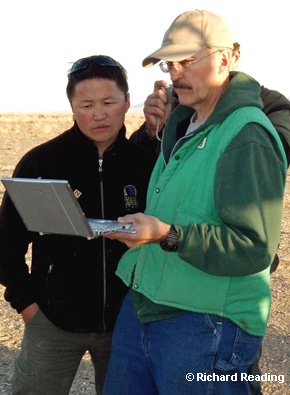Our Mongolian EDGE Fellow Adiya has just sent us a blog on the project he has been working on in collaboration with researchers from the Denver Zoo and The Wilds, USA.
As there is very little known about wild Bactrian camels, studies into home range patterns and habitat use are of great importance to understand their habitat requirements and threats so that appropriate conservation actions can be identified.
Here is what Adiya sent us:
My observation study intensively continued on the Wild Bactrian camel in Mongolia. Last November 2007, we put the new type of collar on the Wild Bactrian camel with the Denver Zoo researchers.
Currently, the wild Bactrian camel is distributed in the Great Gobi “A” Strictly protected area part “A” which locates southwest part of Mongolia. We have been studying the movement and migration route of Wild Bactrian camel by using satellite collars.
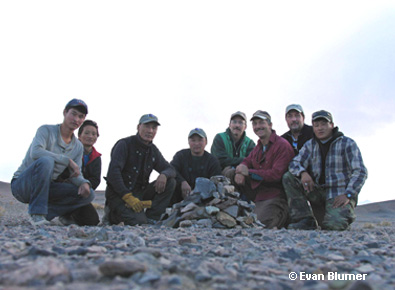
This time, we put new type of collar on captive wild camel at the Zakhyn-Us breeding centre for a testing its performance with researchers from the Denver zoo and the Wilds USA. In this survey, there was participated Dr. Richard Reading (Denver zoo), Dr. Evan Blumer (The Wilds), Steve Lambe (System engineer), Nyambayar (park administration), Enkhtiavan and Ankhbayar (drivers), Adiya Yad (Institute of Biology) and park rangers.
The collars we tested had two different systems, one has satellite GPS to get information from satellite, but also it has ground telemetry system. When an animal approaches the “base station” of the collar at a distance of about 200 meters, data from the collar will be automatically downloaded to the base station. Therefore, the base stations need to be set up near the water points, because, wild animals or Wild Bactrian camel must visit the water point for drinking water.
Downloaded data from the base station could then be copied to the Notebooks using wireless connection Bluetooth system within certain distances such as 150-200 meters. So, we think that this new system is easier and cheaper to get data compared to satellite systems.
We planned to put the collars on the Wild Bactrian camels, however, during the trip we had van problems so we had to stop the survey.
Therefore, we discuss with the Wild Camel Protection Foundation, Captive Wild camel Breeding programme and Park administration staff and agreed to put collars and test it on the Captive Wild camels. The collars worked normally.
This time, we set up two base stations: one is near the Bogtstsagaanders water point and another one is at Zakhyn-Us breeding centre. If new system work perfectly and is stable, then we plan to put 3-5 more collars on the Wild Bactrian camel in wild population and set up 5 more base stations in Great Gobi “A” Special Protected Area.
Movement and migration study of the Wild Bactrian camel continues successfully, but still we need to be continue with ecological studies, strengthening conservation measures, improvement of habitat condition and water supplies system and take necessary biotechnological activities.
We specially thanks to the people who think and pay attention to the conservation and study of Wild Bactrian camel that there are only a few animal left not only in Central Asia, but also in the world. However conservation issues and efforts on the Wild Bactrian camel are still continuing.
I would like to thank Bilge for helping me with the translation of this blog to English.
